|
15th May 2022 It's a Sunday and we're logged into Board Game Arena for some online board gaming fun. Diced Tomatoes, a game about tomatoes that uses dice - what it says on the tin er... box! Caveat: we've only played this game digitally. What's in a game?
There's not much art to speak of in Diced Tomatoes, understandably, the minimalist art is red-themed. How's it play? Setup
On to play Points are scored in Diced Tomatoes by creating vertical lines of 4 dice (Vines if you will.) in either straights or sets of-a-kind. In a turn, the active player takes their actions which will involve rolling and placing dice, which may result in them or other players scoring points.
Endgame There are 2 criteria that can trigger the game end. If there are no dice left in the central pool at the end of the active player's turn, then the game immediately ends. Alternatively, once any player has filled all 6 spots on their scoring board, they score 2 bonus VPs, current round is played out and the game ends. Players now calculate their finishing scores from the following sources.
Points are tallied, highest score wins. Overall
Despite Diced Tomatoes being a fairly light game with an unusual implementation of trick-taking mechanics (In that you don't really take other players' tricks - well you can ruin them instead!), it does give players lots to think about. Firstly players will want to create their own vines. The order in which seeding dice are scored can be very important because getting it right will earn bonus points. This is particularly true for the early scoring spaces. A value 1 seeding die earns 6 VPs when placed on the 1 slot but a value 6 seeding die placed on the 6 slot only earns 1 bonus VP. Secondly, because players can put dice on to the vine tokens and vines of other players, it means that they can try to complete them to gain karma. Alternatively, they can try and mess with other player vines to disrupt their scoring. E.g., if another player has a vine with 3 '1s' which they are intending to put into scoring slot 1, adding a 1 value black dice would complete the vine, but the black die would lower the seeding die's value to 0 - wiping that vine out. Or adding a gold die would add 1 point making the seeding die worth 2 when completed, this means the other player would not gain the star fruit bonus when putting it on scoring slot 1. So while they've gained a VP from the gold die, they've lost the bonus from not matching the scoring slot, collectively losing 5 VPs! So it seems sometimes, players will want to wipe out their own vines to keep a scoring opportunity open! As you can see, Dice Tomatoes provides quite a lot of interaction between players and a quite lot of opportunities for 'take that' moves and depending on how you feel about this style of play, may or may not be your kind of thing. Personally I'm a bit ambivalent about it - especially in a game that's a quick and light filler. One thing I'm not a fan of is having your vines wiped when your score goes above 6. I know why the rules are that way but it feels a bit mean spirited and counter-intuitive to lose points by gaining points. Diced Tomatoes is a not difficult to learn, fairly quick to play filler game. Mechanically it's fairly solid and has a unique spin on trick-taking. I'm struggling to find any genuine criticism but then, I'm also struggling to find any reason to play it again. I feel that the ease in which players can interfere in each other's plans is a bit of a frustration and it left me unengaged. It also feel like it prolongs what could be a short and sweet game. It's not a bad game but there's just other game's I'd rather play. Of course YMMV and maybe you'd get more out of it but Diced Tomatoes isn't one for me.
0 Comments
10th April 2022 Sunday evening is here and we're logged into Board Game Arena for a night of gaming. 'Viva Las Vegan!' Or 'Millions of cabbages, cabbages for me.' 'Millions of cabbages, cabbages for free.' Err... wait...? No... that's enough of that! Las Vegan is a umm.. vegetable-themed trick taking card game? Caveat: We've only ever played Las Vegan digitally and not sure if a English language version is even available in hard copy? What's in a game?
There's fairly minimal art throughout Las Vegan. The cards feature illustrations of vegetables on a slot machine reel and the cabbage machine cards show either vegetables or numbers across 3 reels. Nothing bad but also nothing to write home about. There's no iconography to speak off, just plain and simple numbers as well as the icons for the 4 types of card. How's it play? Setup
On to play Las Vegan is played over 1-4 rounds, each round follows the typical turn structure for a trick taking game, with the first or active player playing a card and the player to the left the 'following' that play.
Endgame Las Vegan can end in 1 of 2 ways. If during scoring at the end of any round, any player's cabbage tokens (VPs.) reaches 0 or lower, it ends the game. The game will also end at the end of the 4th round regardless. Once the game has ended, players tot up their remaining cabbage tokens. Points are tallied, highest score wins. Overall
The first thing to talk about is the scoring and particularly the casino chips. The values on the chips go from -3 to +1 and obviously skew heavily towards the negative, it's even worse than that though. There are 4 double-sided chips and +1s only appear on 2 of the 8 sides (Although in some regard this is quite logical as most numbers only appear twice across the chips.), thus it's skewed both in value and probability. The golden casino chip is negative on both sides. All of this means thhat this is a game about how little you lose, minimising your losses and not really how much you accumulate. Las Vegan appears to be themed ont slot machines and one-arm bandits and maybe this is part of that theme; 'The house always wins?' Even so, it all seems negative and doesn't feel like fun. Despite my reservations about the scoring, the casino chip mechanic itself is pretty interesting. When a player gets the opportunity to deploy a chip, they'll want to try and remember what cards they and the other players have taken. E.g., if the '3' cabbage machine card is in play and a player knows an opponent has taken several 3's, they may want to put a big negative on that card to hit them. Conversely, a player may try and use a +1 if they've collected 3s this round. This is also affected by when 7s appear. The earlier that 7s appear, the more of a gamble it is using the casino chips, if they appear later, it's a lot easier to predict scoring. It's also that chips might appear right at the start or end of a round, or several may appear in single trick. Players will need to calculate and adapt when using the casino chip, remembering plays opponents make made will be helpful too. There's not too much to say about the mechanics for the actual game, which are very straightforward and about as basic as a trick taking game can get - and that's not a bad thing, it makes the game accessible and easy to learn, as well as playing fairly quickly . Las Vegan could be a good filler or finisher for the day. Having said that, the scoring mechanics feel a little clunky, counterintuitive and unnecessarily fiddly. The game's depth comes from strategies that will emerge once casino chips are starting to get played on cabbage machine cards and then players will look to how they can manipulate or win or lose tricks to optimise their scores. For me; I found the game's simplicity a little unengaging, a little too run-of-the-mill while the depth the scoring brought to the table (sic) did not add enough to make me want to play more. The negative scoring also left me feeling frustrating. Not a game for me. 24th October 2021 We've logged into Board Game Arena for some Sunday night gaming. The first game of the night was The Crew: Mission Deep Sea. Clearly the lost continent of Mu has fascinated gamers since times immemorial, so what better than a game about discovering the sunken land: Or at least the plot for a very good trick taking game. What's in a game?
Quality-wise, they're all pretty average quality and what you'd expect. Artwork is repeated across the game's 4 main suits which are colour themed and tend to feature monochrome illustrations decorated in the suit's colour. The trump cards all feature submarines of progressively larger size. The task deck utilises a fair amount of iconography for objectives, mostly it's fairly clear, sometimes some smaller writing appears on a card to clarify, occasionally the rulebook had to be referred to, nothing game breaking. How's it play? Setup
On to play The Crew: Mission Deep Sea is a trick-taking game where one player starts a round by playing a card and the others must follow suit.
Endgame Players collectively win or lose at The Crew: Mission Deep Sea. Ultimately they win when all the missions have been completed. Overall
A friend described The Crew: Mission Deep Sea as whist with a twist and that's sort of accurate but barely describes how much of a good game this is. The task cards are what makes so good, there are 96 of them, providing a vast combination of objectives that can appear. Even if you complete the 30-odd missions in the logbook (Which could take a while!), there's nothing to stop players from just choosing a difficulty and playing! Players must always pay attention during missions, simple mistakes can very quickly end them and each one will provide a distinct randomly generated challenge to face - and pitfalls to avoid! Players will have to silently co-ordinate their efforts, task cards will force them to learn to exploit all the game's rules to be successful, they'll have to learn that winning a trick is not always the way they should go and at times not having the right suit is the right choice! I could spend ages going on about how we've played the game but instead i'll say: The Crew: Mission Deep Sea packs a lot of gameplay into a little package of what is essentially a couple of decks of cards and a handful of tokens. It's a game everyone should definitely try. 15th August 2021 Sunday evening is here again and I'm my living room logged into Board Game Arena on my PC for some gaming goodness. First up was 6 nimmit!. 6 nimmit! is 6 takes in German, it's quite an abstract game and the name will make sense when you seen the rules. What's in a game? 6 nimmit is a card game and comes with a deck of 104 cards number from 1 to... you guessed it... 104 and that's it for game components. Each card also displays one or more symbols which are endearingly known as bullheads. Bullheads are bad. The cards are normal quality as you'd expect. There's pretty much no artwork to speak off, other than the symbol for bullheads and colours used to mark out cards which have more than 1 bullhead symbol. The game has no iconography other than numbers and bullheads and being an abstract game, doesn't need anything else. How's it play? Setup
On to play 6 nimmit! is played over several rounds and the goal is for players to empty their hand of cards and avoid collecting other cards as much as possible each round, which is not as easy as you might think... How is this done, well read on.
Endgame Play continues through rounds until at the end of a round, in which at least one player has accumulated 66 or more bullheads.. Points are tallied, the player who has collected the lowest number of bullheads wins. Overall
As per the brevity of this blog post, 6 nimmit! is a very simple game to learn, it's also a curious mix of strategy and unpredictability. The objective is obviously to try and not collect cards, they'll be times that a player will want to play lower value cards to 'get into' a row before it gets to 5 cards, conversely, they'll times they want to play higher cards to go later and hope someone plays the 6th card in a row to clear it out. Sometimes players will want to play very low and choose which row to take because it's the best of a bad set of choices, the bullheads a row may contain can vary greatly. Also choosing which row to take presents a player with the opportunity to mess with other players. Watching a row you planned to play a card into vanish and leave a much worse alternative is quite the surprise. And that's the thing, while some card plays can be much safer than others, it's almost always never 100% safe and it's other players bring that element of aforementioned of unpredictability to the game. Quick to pick-up-and-play, 6 nimmit! can be a lot of fun with its surprises and reversals -of-fortune, provided you don't find playing fairly randomised games frustrating and you're not too much of a serious gamer. 16th July 2019 It's a Tuesday and the 3rd and final game of game evening at 'The Sovereigns' in Woking is 'Honshu'. Wikipedia describes Honshu as 'the largest and most populous main island of Japan'. Honshu the game describes itself as a 'trick-taking, map building card game set in feudal Japan'. So, there you go! What's in a game?
How's it play?
The objective of Honshu is to lay down map cards to create your province. When laying a card, generally the objective is to lay cards in such a way that matching terrain types are next to each other. First thing though, is set up.
Trick-taking
Play continues for 3 turns. Then before the 4th turn, players pass their 3 remaining cards to the player to their left. Once the 6th turn is completed, the players will have run out of cards. 6 new cards are randomly dealt to each player and play continues. After the 9th turn has been completed, players pass their 3 remaining cards to the player on their right. After the 12th turn, the game is over and we go to scoring. Endgame So once the 12th turn is over, it's time to score. There are several different terrain types and each type scores differently.
Overall Honshu is a small game that packs a lot in. It has a trick-taking mechanic that can be exploited to good use if you're canny, as well a a drafting mechanic. Which is quite interesting. The map-laying phase gives the player quite a lot of flexibility when putting map cards down, so you get a lot of choices and decisions to make. Honshu reminds me a little bit of 'Isle of Skye', both games are broadly divided into a acquisition phase and a map laying phase. Both games give players options for strategies (And both games allow you take another player's map tile/card!). Honshu is a little simpler, but quicker to play. And like Isle of Skye, I think Honshu is a good game and definitely worth trying. 5th March 2019
The final game of the night at 'The Sovereigns). Game 3 was 'The Great Dalmuti'. The Great Dalmuti is a card game designed by Richard Garfield - he who invented 'Magic: The Gathering'. In fact, The Great Dalmuti was the first game Richard Garfield designed after Magic - and it was another card game! There was a lot of speculation about what this game could be? It turned out that it was a 'normal' card game. It also turned out that it is a good card game. The Great Dalmuti is a trick-laying card game with a little twist: It's all about social inequality. At the start of every game a social hierarchy is established (either by cutting the deck or the finishing order in the previous game). The social order goes like: Greater Dalmuti: Sitting at the top of the heap is The Greater Dalmuti. Lesser Dalmuti: Next is the Lesser Dalmuti, lower than Greater Dalmuti, but higher than the Merchant classes. He know his place - much like the Two Ronnies sketch. Merchants: There can be up to 4 Merchants in a game, they are also arranged according to the social hierarchy. Lesser Peon: The Lesser Peon is not quite bottom of the heap, that is reserved for... Greater Peon: The Greater Peon, who truly is at the bottom. Even worse; the Greater Peon must shuffle and deal cards out at the start of the game. Once the social order has been established, players must change seats according to their position in the hierarchy. The Greater Dalmuti doesn't have to move (and why should he, he's the most important player in the game). So The Lesser Dalmuti sits to the left of The Greater Dalmuti. To the left of The Lesser Dalmuti sit the Merchants, starting with the most important merchant and going downwards in order to the left. To the left of the lowest merchant sits The Lesser Peon and finally to the left of The Lesser Peon sits The Greater Peon. Interestingly, this means that The Greater Dalmuti is to the left of the Greater Peon and that they sit next to each other. Next, the rules need to be explained before talking about how the game's twist affects the gameplay. The deck of cards consists of 80 cards.
The goal is to empty your hand of cards. This is done by playing 'tricks'. Whoever is The Greater Dalmuti begins the first round of the game. In subsequent rounds, whoever last played a trick begins the round.
So that's the rules, what about the twist? What about the social inequality? That's where taxation comes in. What's taxation?
However, during taxation, there is a small chance of something called revolution. This is how revolution works.
And that's the rules, with a small twist of inequality thrown in for good measure. This inequality makes for some interesting asymmetrical game play. When playing, what tends to happen is that the players at the higher end of the hierarchy tend to dominate the first few rounds, (quite often, by the time play reaches the lower positioned players, they have to pass) this allows the higher ranked players to dominate. But usually, at some point the Peons will get to start a round; then they tend to steamroller everyone else for a while. When a Peon player decides to lay (as their first trick) something like 7 12s, it's likely that The Greater Dalmuti player won't even have 7 cards in their hand, nevermind 7 cards that match! Whilst the lower value cards are better, sometimes they cannot match the number of higher numbered cards that are played. Like all good games, your decisions here are very important. Sometimes you have to resist the urge to always just get rid of your worst cards (very often a sound strategy) to retain a set or keep a good card for later. EG; do you break a set of 3 cards to play a trick now or retain them, so that later they can be used make a trick harder to trump. Being able to 'control' when a trick ends, so that you get to determine the cards that start the next trick is very useful. The Great Dalmuti is a quick and easy game that is fun to play and I only have 2 minor gripes about the game.
Other than that, it's nice little game. |
AuthorI play, I paint. Archives
March 2024
Categories
All
|

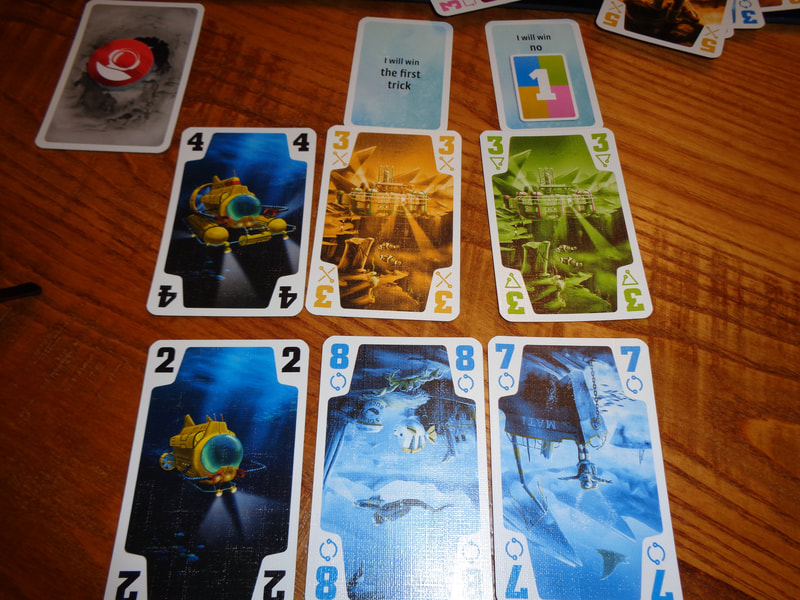
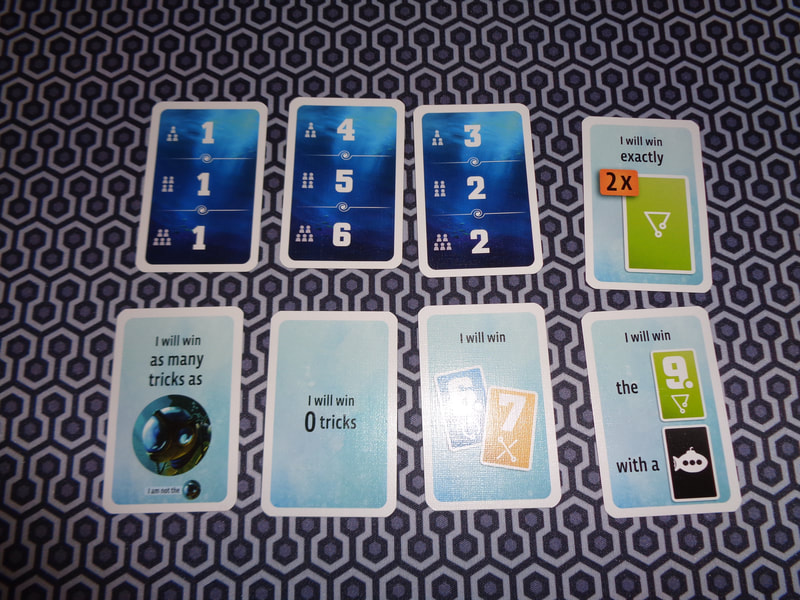
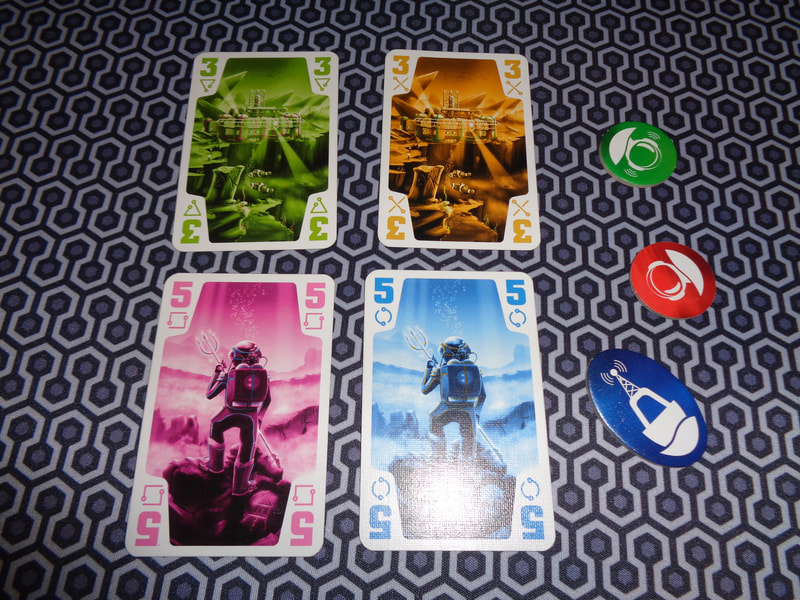
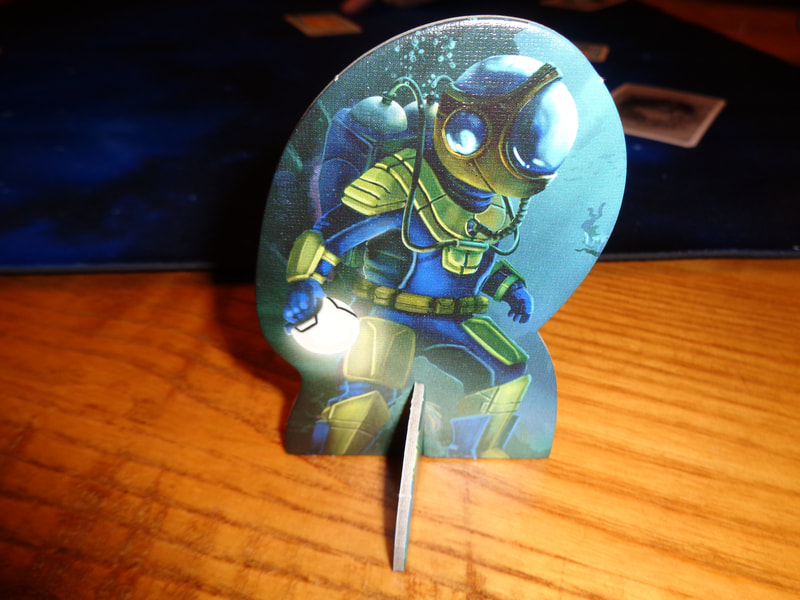
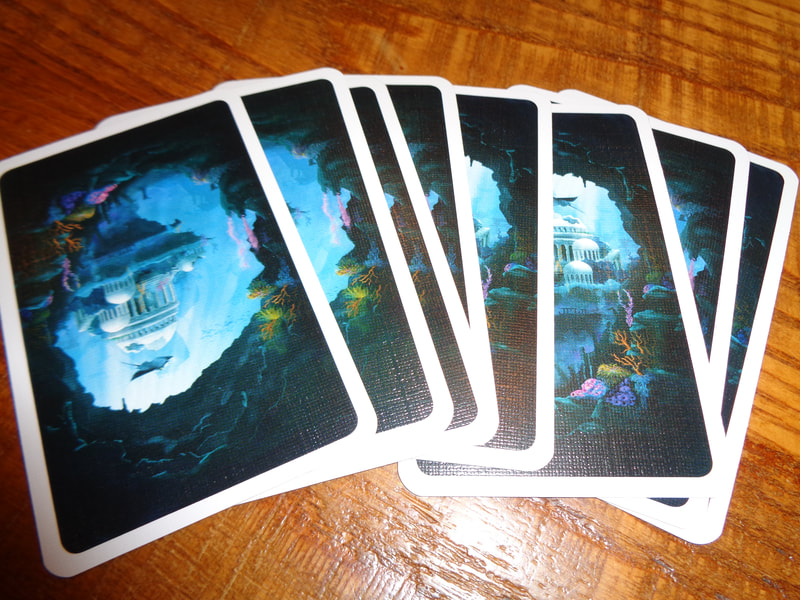

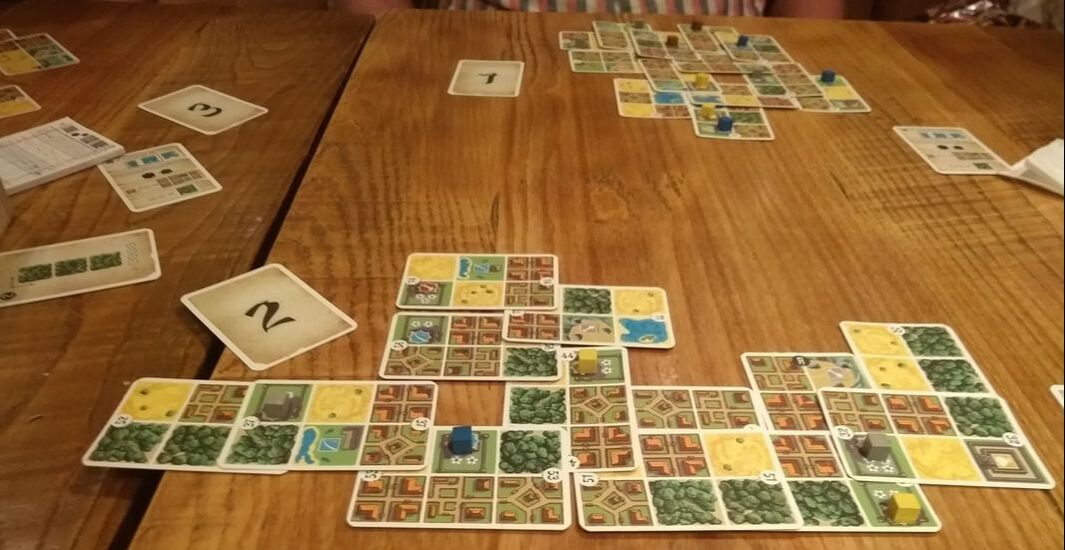
 RSS Feed
RSS Feed
